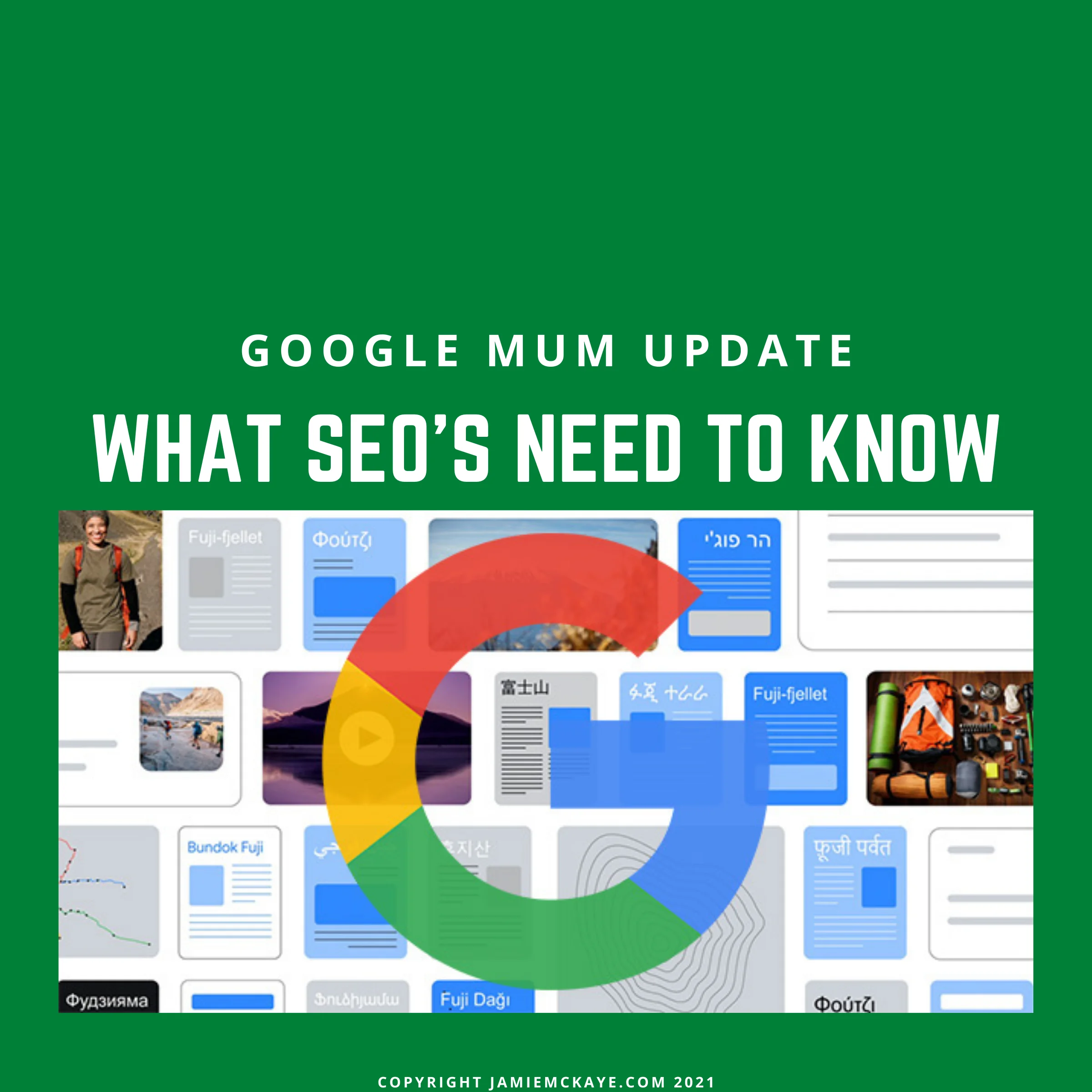An SEO's Guide to the Google MUM Update

The recently announced redesign of Google Search has introduced intuitive new ways to explore topics and surface more relevant content for users.
But what about SEO’s, marketers and website owners, how can they ensure their sites remain relevant in a landscape where Google is making it easier for searchers to explore even more topics and discover more websites and pages?
Many suspect that little will change at Google’s end in terms of search optimisation. Title tags and headings, used for high traffic keywords in the keyword-1, keyword-2 SEO style may still be due another look; however that has been the case for a number of years now.
Ultimately, making a web page as easy to understand as possible remains one of the core attributes of effective SEO. Following Google’s guidelines for headings and titles (and utilising them to describe what those web pages are about) will still be incredibly useful.
Aside from that, there is nothing radical as things stand; when it comes to MUM, all the old rules still apply:
Quality of content
High quality content matters, much as it always has. That means content that is focused, but also content that opens up the potential for tangential linking around other comparable or related topics.
The MUM (Multitask Unified Model) algorithm notices (and places a considerable amount of value in) multimedia formats.
If content answers questions and provides the maximum value possible, you are doing what you need to.
So, is there a greater need for multimedia?
Written content, such as articles and blog posts is still a lynchpin for attracting the best kind of attention, however backing those carefully crafted words up with other content such as podcasts, audio, images or video content may help MUM recognise its relevance.
That relevance means the content will be added to search results, to hold its own (or not) against some of the most significant contributions across the web. Even with the removal of language barriers, multi-lingual SEO is still going to be a wise part of any SEO strategy as it will impact the regional or local power and relevance of content, use it to your advantage.
Wider search and machine learning
SEO’s, marketers and website owners take note; here are some of the most important things to make sure you cover:
- Create content that engages, builds brand recognition and loyalty
- Prioritise Informative, focused content including words, images and other media
- Add structured data to your page to hint at its content
- Be mindful of the AI-centric nature of MUM, it learns as it goes
- Google MUM has real potential to create an expanded pool of SERP competition, if you know who to rely on for trusted content, you’ll continue to be reliable and your audience shouldn’t be minimised
- Continue to build authority and expertise in your given industry to EAT the completion through Expertise, Authoritativeness and Trustworthiness
Google’s MUM update is removing a lot of the tips and tricks that many sites used to hide behind.
Quality, interest, relevance and value have long been buzzwords in SEO, now they are genuine targets to ensure content is seen. This will widen potential audiences and bring greater competition for visibility.
The MUM update is just as likely to be as positive for many as it will prove to be a wake-up call for others.





Comments